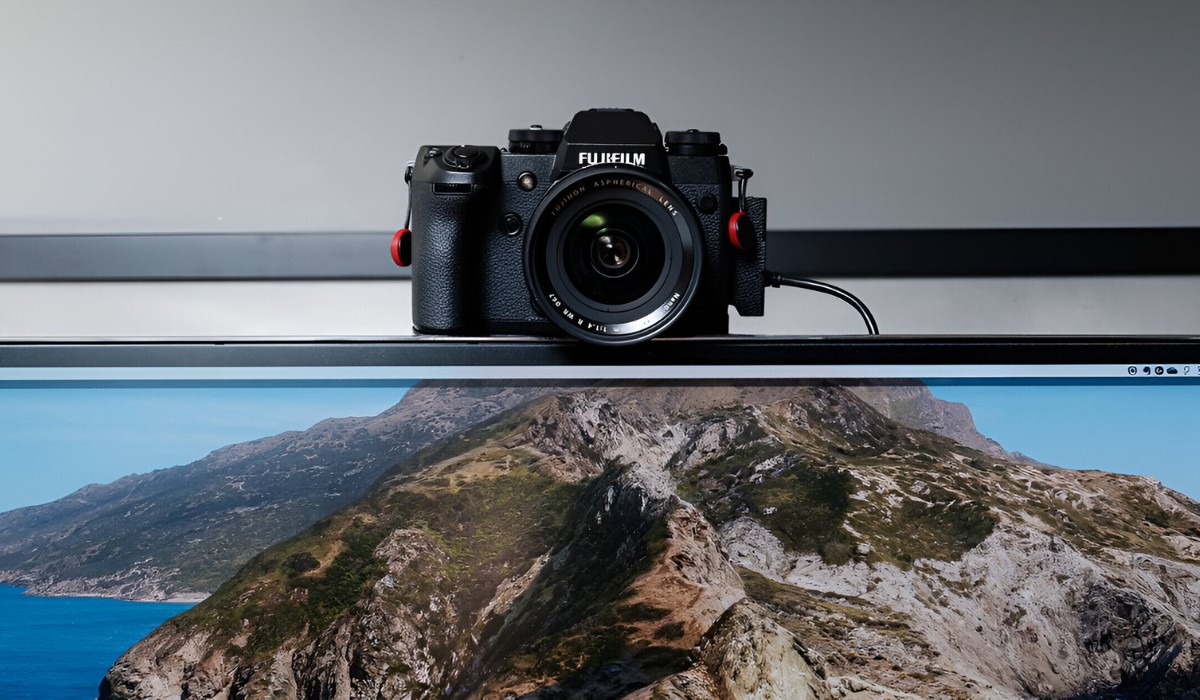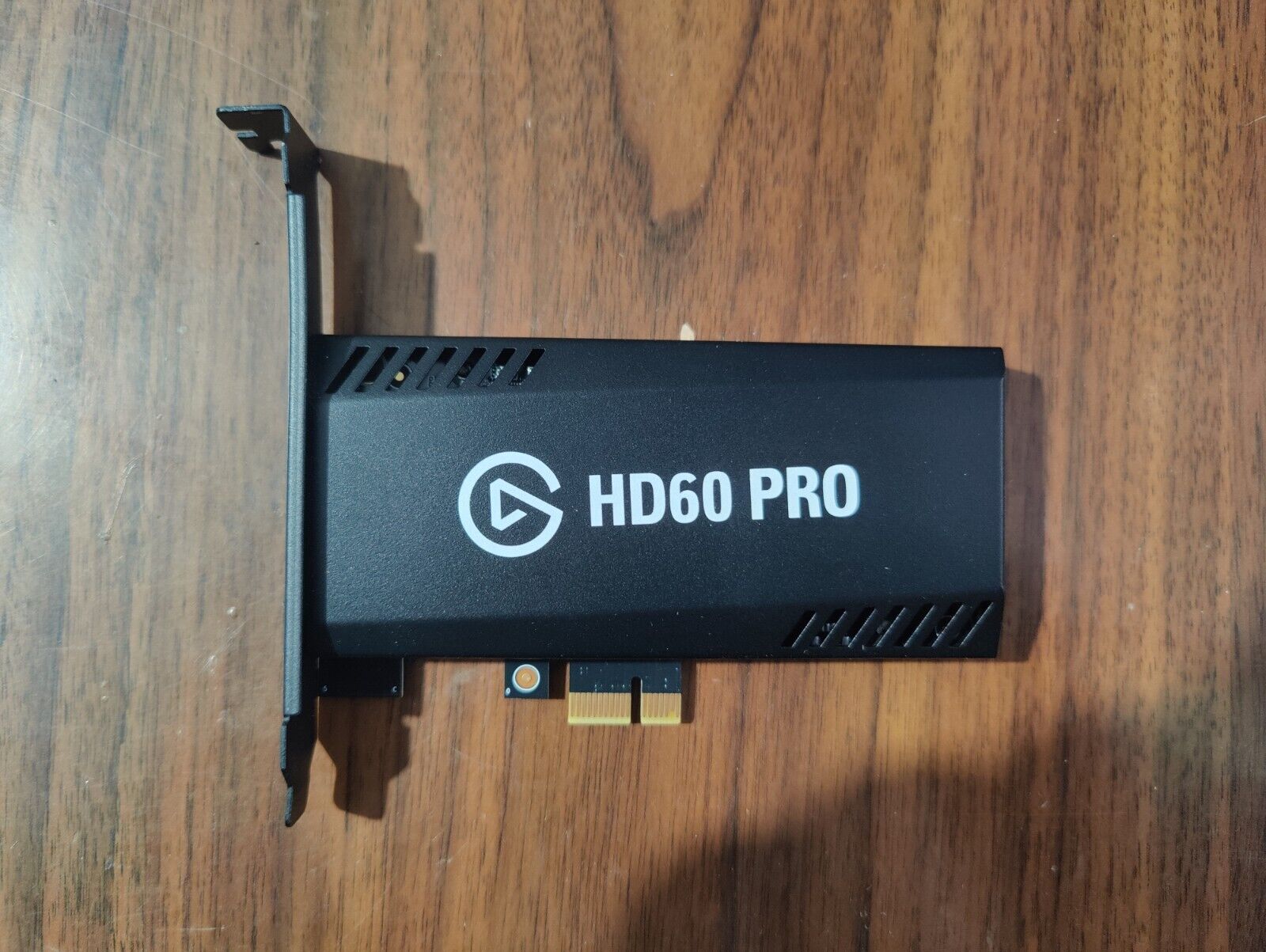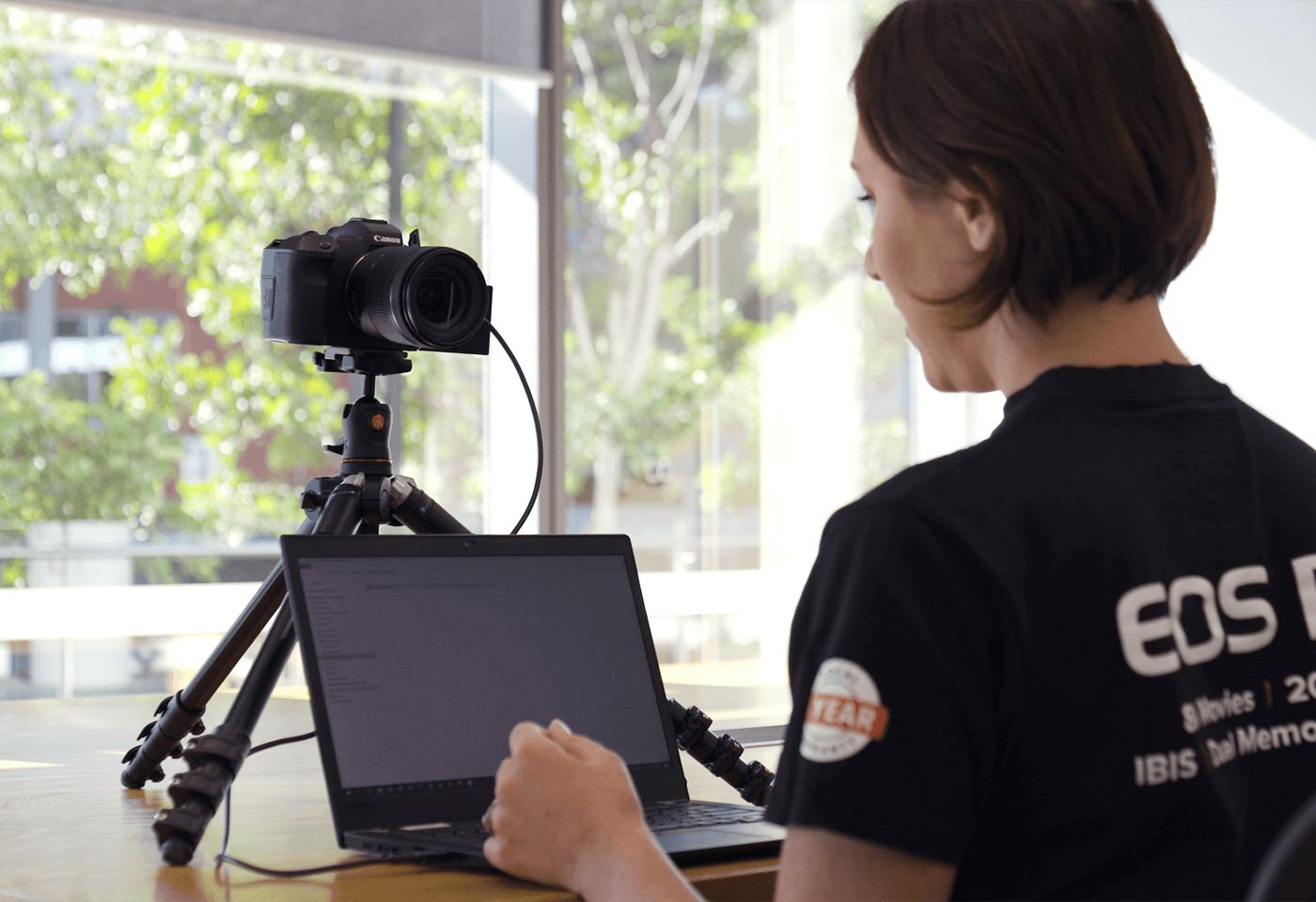Introduction
So, you've just purchased a DSLR camera, and now you're eager to dive into the world of digital photography and videography. However, capturing stunning images and creating captivating videos is only the first step. To truly unleash the full potential of your DSLR camera, you'll need the right computer software to complement your creative endeavors.
From photo editing and video processing to file management and tethering, the software you choose can significantly impact the quality and efficiency of your work. With a myriad of options available, selecting the ideal software can be a daunting task. Fear not, as we'll guide you through the essential types of computer software that seamlessly integrate with your DSLR camera, empowering you to elevate your visual storytelling to new heights.
In the following sections, we'll explore the diverse categories of software tailored to enhance your DSLR photography and videography experience. Whether you're a seasoned professional or an enthusiastic beginner, understanding the role of each software type will equip you with the knowledge to make informed decisions and optimize your creative workflow. Let's embark on this exciting journey to uncover the perfect software companions for your DSLR camera.
Now, let's delve into the world of photo editing software, where you can refine and transform your raw images into stunning visual masterpieces.
Photo Editing Software
Photo editing software plays a pivotal role in unleashing the full potential of your DSLR-captured images. With an array of features ranging from basic adjustments to advanced retouching tools, these applications empower you to refine and transform your raw photos into captivating works of art.
One of the most popular and powerful photo editing software is Adobe Photoshop. Renowned for its versatility and robust capabilities, Photoshop enables users to perform intricate edits, apply precise adjustments, and leverage a plethora of creative tools to enhance their images. From professional photographers to aspiring enthusiasts, Photoshop remains a go-to choice for its unparalleled flexibility and comprehensive feature set.
For those seeking a more user-friendly and intuitive editing experience, Adobe Lightroom emerges as a top contender. Tailored specifically for photographers, Lightroom streamlines the photo editing process with its seamless organization, non-destructive editing, and an array of presets and adjustment brushes. Its integration with Photoshop further expands its editing prowess, offering a cohesive workflow for photographers of all levels.
Beyond the Adobe suite, other notable contenders in the photo editing realm include Capture One Pro, renowned for its exceptional raw processing and tethering capabilities, and DxO PhotoLab, acclaimed for its advanced optical corrections and unparalleled image quality enhancements.
Moreover, for those seeking free and open-source alternatives, GIMP (GNU Image Manipulation Program) stands out as a robust option, providing a wide range of editing features and extensive customization options without the price tag associated with proprietary software.
Regardless of your preference, selecting the right photo editing software is instrumental in elevating your photography, allowing you to unleash your creativity and craft visually stunning images that resonate with your audience.
Video Editing Software
When it comes to harnessing the full potential of your DSLR-captured videos, selecting the right video editing software is paramount. These applications offer a plethora of tools and features to refine, enhance, and transform your raw footage into compelling visual narratives.
One of the industry-leading video editing platforms is Adobe Premiere Pro. Renowned for its professional-grade capabilities and seamless integration with other Adobe Creative Cloud applications, Premiere Pro empowers users to craft cinematic videos with its advanced editing tools, precise color grading features, and robust audio editing functionalities. Whether you’re a seasoned filmmaker or an aspiring content creator, Premiere Pro offers a comprehensive suite of tools to bring your creative vision to life.
For those seeking a more streamlined and user-friendly editing experience, Final Cut Pro X stands out as a top choice. Designed exclusively for macOS, Final Cut Pro X combines powerful video editing capabilities with a sleek interface, intuitive timeline, and seamless integration with other Apple devices, making it a preferred option for many professional videographers and filmmakers.
Furthermore, for individuals exploring free and open-source alternatives, DaVinci Resolve emerges as a compelling option. Boasting professional-grade editing, color correction, visual effects, and audio post-production tools, DaVinci Resolve offers a remarkable feature set, making it a popular choice for independent filmmakers and content creators looking to elevate their video projects without breaking the bank.
Additionally, for those who prioritize cross-platform compatibility and user-friendly interfaces, Adobe Premiere Elements and Corel VideoStudio present accessible options, catering to enthusiasts and beginners venturing into the realm of video editing.
Ultimately, the video editing software you choose will significantly impact the quality and storytelling prowess of your videos. By leveraging the diverse array of features offered by these applications, you can seamlessly transform your raw footage into captivating visual narratives that resonate with your audience.
File Management Software
Efficient file management is essential for organizing, storing, and accessing the multitude of photos and videos captured with your DSLR camera. File management software provides the necessary tools to streamline your workflow, ensuring that your media assets are well-organized, easily accessible, and backed up for seamless retrieval and archival purposes.
Adobe Bridge emerges as a prominent file management solution, seamlessly integrated with the Adobe Creative Cloud suite. This versatile application allows users to organize, browse, and manage their media assets with ease, offering advanced metadata support, batch processing capabilities, and seamless integration with Adobe’s creative applications, making it an invaluable asset for photographers and videographers alike.
Another notable file management software is Photo Mechanic, renowned for its rapid browsing and efficient metadata management features. With its ability to ingest and tag images swiftly, Photo Mechanic streamlines the culling and organization process, enabling photographers to expedite their workflow and focus on the creative aspects of their craft.
Furthermore, for individuals seeking cross-platform compatibility and extensive organizational capabilities, ACDSee Photo Studio stands out as a comprehensive solution. With its robust file management, metadata editing, and image viewing features, ACDSee Photo Studio offers a versatile platform for photographers to manage their media libraries effectively.
For those who prefer free and open-source alternatives, digiKam presents a compelling option, providing a range of powerful features for photo management, including tagging, geotagging, and extensive metadata support, catering to the organizational needs of photographers without imposing financial constraints.
By leveraging the capabilities of file management software, photographers and videographers can maintain a well-organized media library, facilitating efficient access, retrieval, and archival of their visual assets. With the right file management tools at your disposal, you can optimize your workflow and focus on the creative aspects of your photography and videography endeavors.
Tethering Software
Tethering software plays a crucial role in the realm of DSLR photography, offering photographers the ability to connect their cameras to a computer or mobile device for real-time image capture, transfer, and control. This capability is particularly valuable in studio settings, where instant image review and remote camera control are essential for achieving precise compositions and optimal results.
One of the leading tethering solutions is Adobe Lightroom, renowned for its seamless tethered capture capabilities. With its intuitive interface and robust tethering features, Lightroom enables photographers to capture images directly to their computer, facilitating real-time review, organization, and adjustment of photos as they are captured, streamlining the studio photography workflow.
For photographers seeking advanced tethering functionalities and comprehensive camera control, Capture One Pro stands out as a prominent choice. Renowned for its exceptional raw processing capabilities and tethering support for a wide range of DSLR cameras, Capture One Pro empowers photographers to capture, review, and adjust images with precision, offering a seamless tethered shooting experience.
Moreover, for individuals seeking a versatile and open-source tethering solution, digiCamControl emerges as a compelling option. Compatible with a variety of DSLR cameras, digiCamControl provides an array of tethering features, including live view, remote capture, and camera control, offering photographers a flexible and cost-effective solution for their tethered shooting needs.
Additionally, for those venturing into video production, tethering software such as Canon’s EOS Utility and Nikon’s Camera Control Pro offer seamless integration with DSLR cameras, providing remote control and live view capabilities, enhancing the efficiency and precision of video capture in studio environments.
By leveraging the capabilities of tethering software, photographers can elevate their studio photography and videography workflows, enabling real-time image review, precise camera control, and seamless integration with post-processing applications. With the right tethering software at your disposal, you can enhance the efficiency and precision of your creative process, ultimately achieving exceptional results in your visual storytelling endeavors.
Conclusion
As you embark on your journey in the realm of DSLR photography and videography, the selection of the right computer software serves as a cornerstone in elevating your creative process and optimizing your workflow. From photo editing and video processing to file management and tethering, each category of software plays a distinct yet integral role in unleashing the full potential of your DSLR camera.
By embracing powerful photo editing software such as Adobe Photoshop and Lightroom, photographers can refine and transform their raw images into captivating visual masterpieces, leveraging a myriad of creative tools and precise adjustments to bring their artistic vision to life.
Similarly, video editing software such as Adobe Premiere Pro and Final Cut Pro X empowers videographers to craft cinematic narratives, offering professional-grade editing tools and seamless integration with other creative applications to bring their video projects to fruition with unparalleled precision and visual impact.
Efficient file management software, such as Adobe Bridge and Photo Mechanic, ensures that your media assets are well-organized, easily accessible, and backed up for seamless retrieval and archival purposes, streamlining your creative process and safeguarding your visual content.
Furthermore, tethering software, including Adobe Lightroom and Capture One Pro, provides photographers with real-time image capture, transfer, and control capabilities, enhancing the precision and efficiency of studio photography, while offering remote camera control and live view functionalities for video production.
As you navigate the diverse landscape of computer software tailored for DSLR cameras, it’s essential to consider your specific creative needs, workflow preferences, and the level of technical sophistication required for your projects. Whether you’re a professional photographer, a budding filmmaker, or an enthusiastic hobbyist, the right software can significantly impact the quality, efficiency, and storytelling prowess of your visual endeavors.
By embracing the power of these software solutions and integrating them seamlessly into your creative process, you can unlock new dimensions of artistic expression, streamline your workflow, and ultimately, captivate your audience with compelling visual narratives that resonate and inspire.

























